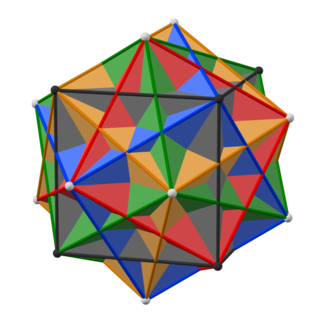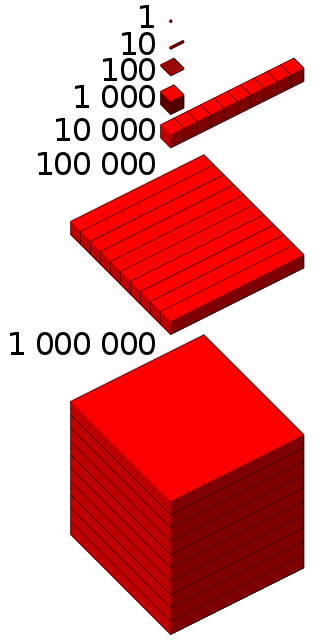Related Research Articles
10 (ten) is the even natural number following 9 and preceding 11. Ten is the base of the decimal numeral system, the most common system of denoting numbers in both spoken and written language.
111 is the natural number following 110 and preceding 112.
68 (sixty-eight) is the natural number following 67 and preceding 69. It is an even number.
101 is the natural number following 100 and preceding 102.
100 or one hundred is the natural number following 99 and preceding 101.
1000 or one thousand is the natural number following 999 and preceding 1001. In most English-speaking countries, it can be written with or without a comma or sometimes a period separating the thousands digit: 1,000.
300 is the natural number following 299 and preceding 301.

360 is the natural number following 359 and preceding 361.
144 is the natural number following 143 and preceding 145.
500 is the natural number following 499 and preceding 501.

1,000,000, or one thousand thousand, is the natural number following 999,999 and preceding 1,000,001. The word is derived from the early Italian millione, from mille, "thousand", plus the augmentative suffix -one.

1,000,000,000 is the natural number following 999,999,999 and preceding 1,000,000,001. With a number, "billion" can be abbreviated as b, bil or bn.
100,000 (one hundred thousand) is the natural number following 99,999 and preceding 100,001. In scientific notation, it is written as 105.
181 is the natural number following 180 and preceding 182.
225 is the natural number following 224 and preceding 226.
10,000,000 is the natural number following 9,999,999 and preceding 10,000,001.
100,000,000 is the natural number following 99,999,999 and preceding 100,000,001.
60,000 is the natural number that comes after 59,999 and before 60,001. It is a round number. It is the value of (75025).
90,000 is the natural number following 89,999 and preceding 90,001. It is the sum of the cubes of the first 24 positive integers, and is the square of 300.
888 is the natural number following 887 and preceding 889.
References
- ↑ Sloane, N. J. A. (ed.). "SequenceA010785(Repdigit numbers, or numbers with repeated digits)". The On-Line Encyclopedia of Integer Sequences . OEIS Foundation.
- ↑ Sloane, N. J. A. (ed.). "SequenceA018846(Strobogrammatic numbers: numbers that are the same upside down (using calculator-style numerals))". The On-Line Encyclopedia of Integer Sequences . OEIS Foundation.
- ↑ Sloane, N. J. A. (ed.). "SequenceA037308(Numbers n such that (sum of base 2 digits of n) = (sum of base 10 digits of n))". The On-Line Encyclopedia of Integer Sequences . OEIS Foundation.
- ↑ Sloane, N. J. A. (ed.). "SequenceA005278(Noncototients: n such that x-phi(x) = n has no solution)". The On-Line Encyclopedia of Integer Sequences . OEIS Foundation.
- ↑ Sloane, N. J. A. (ed.). "SequenceA006966(Number of lattices on n unlabeled nodes)". The On-Line Encyclopedia of Integer Sequences . OEIS Foundation.
- ↑ Sloane, N. J. A. (ed.). "SequenceA019988(Number of ways of embedding a connected graph with n edges in the square lattice)". The On-Line Encyclopedia of Integer Sequences . OEIS Foundation.